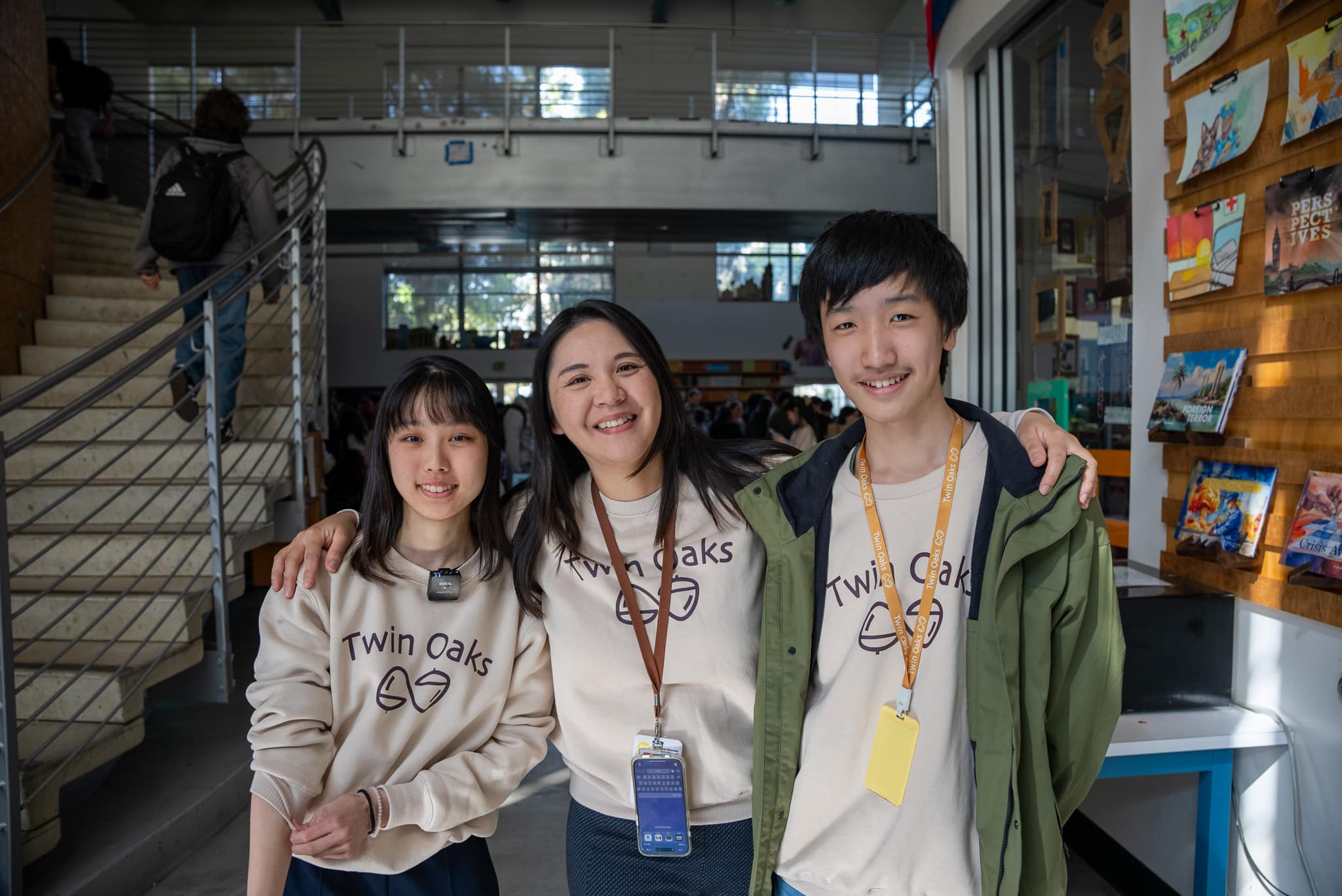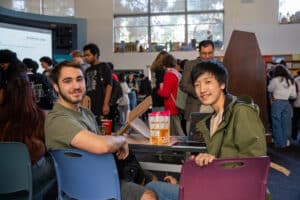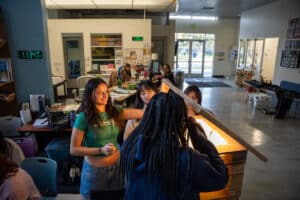
High Tech High International recently welcomed a group of students from Taiwan as part of the Twin Oaks program, kicking off nine days of collaboration, creativity, and cultural exchange. This wasn’t just another school event—it was a planned opportunity for students from both systems to learn from each other, share ideas, and build friendships that extend beyond borders. From hands-on projects to exploring new perspectives, the experience highlighted the power of global learning and teamwork.
A Partnership Built on Curiosity
It all started with a simple idea. What happens when students from different cultures work together? Geneva Clark, 12th-grade environmental science teacher, was excited about the project. She wanted students to learn about topics like the circular economy, furniture design, and even advertising. The goal was to take these ideas out of books and into real life.

Before anyone met in person, students were paired as “pen pals.” They exchanged messages and got to know each other. Can you imagine writing to someone from a faraway country? These early chats set the stage for real friendship later. It was a simple way to build bonds before the face-to-face meeting.
Mixing Subjects and Materials
One of the best parts of the project was how it mixed different subjects. Teachers helped integrate math, science, and art for a real-life challenge. And guess what? Cardboard became the star. Yes, cardboard!
Students saw everyday items in a new light. They saw that cardboard could be turned into useful, cool things. The project was not just about building furniture; it was about rethinking how we use our materials. Creative ideas began flowing.
Moments of Joy and Surprise
There were many moments of fun and surprise. One exchange student saw a cactus for the first time. Can you imagine his surprise? And then there was a snack swap. Taiwanese snacks, like dried fish, met our chips. These little moments made the project even sweeter. They showed that learning can be fun and that differences make life interesting.
A Trip to IKEA
A highlight was a field trip to IKEA. The visit gave everyone an insight to real-life design. Students saw how ideas come to life in a store full of smart, sustainable designs, sparking many ideas. Teams gathered quickly to sketch and build prototypes.
One group chose to design a “fainting couch.” Yes, a fainting couch! They took an old idea from the Renaissance and made it modern. The idea was both clever and funny. When the pieces came together, the team was so proud. They did it all as a team, blending ideas from both cultures.

The Magic of Working Together
The best part of the project was how it broke down walls. In just nine days, students who had never met before became close. They worked on furniture design, talked about music, and compared school life. They shared ideas about taxes and credit systems in Taiwan and the United States. Teachers noticed how this project changed the students. One student said that working with strangers felt scary at first, but soon, those strangers became good friends. This was a clear sign that when you work together, amazing things happen.
The Final Day: A Bittersweet Farewell
The project ended with a final exhibition. On that day, every group showed their work. The exhibition was filled with proud smiles and a few happy tears. It was a day to celebrate all the hard work. The projects were on display for parents, teachers, and community members. The best part was seeing the students stand together and show what they made. There were hugs and goodbyes. Even though it was hard to say farewell, everyone knew that the friendship would last.
Looking Ahead to New Adventures
The success of this project has everyone talking. Teachers and students are excited about more projects like this. They want to keep building bridges between cultures. One teacher said that these projects create connections that you do not get in a normal classroom. So, what do you think? Can you imagine more projects that mix art, science, and culture? The hope is to keep this spirit alive, that the Twin Oaks project can be the start of a broader journey in global learning.
Tags: